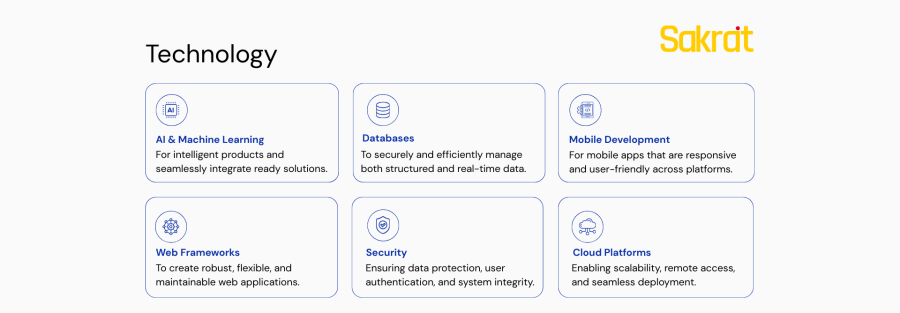The race to integrate AI into every facet of business is on. The efficiency gains and innovation potential are undeniable. According to Gartner, by 2026, over 80% of enterprises will use generative AI or have AI-powered applications, a seismic leap from less than 5% in 2023.
But this gold rush has a dark side. The same technologies driving productivity are also creating a vast and complex new attack surface. For enterprise leaders, the conversation must urgently shift from if we should automate with AI to how we can do so securely. Ignoring AI security is no longer just a technical oversight, it’s a critical business risk that you cannot afford.
The New Threat Landscape: When AI Becomes the Weapon
Cybercriminals are early adopters, and they are weaponizing the same AI tools your teams use for productivity. This has created a new class of threats that are more sophisticated, scalable, and harder to detect than ever before.
- Hyper-Realistic Phishing and Social Engineering: Forget poorly worded emails. Modern AI can craft highly personalized phishing attacks at an industrial scale, perfectly mimicking the language and context of a trusted colleague or executive. IBM’s X-Force reports that these AI-driven campaigns are now the leading initial attack vector, making your “human firewall” more vulnerable than ever.
- AI-Generated Deepfakes and Vishing: The “CEO fraud” scam just got a terrifying upgrade. Attackers can use AI to create deepfake audio or video of an executive to authorize fraudulent wire transfers or manipulate employees. Forrester warns that these highly convincing “vishing” (voice phishing) attacks are surging, targeting critical financial processes.
- Automated Vulnerability Discovery: Malicious actors can use AI to scan for software vulnerabilities, test for weaknesses, and write exploit code in minutes rather than days. This dramatically shortens the window you have to patch critical systems and stay ahead of threats.
The Hidden Risk Within: “Shadow AI” and Uncontrolled Data Leaks
Perhaps the most immediate threat doesn’t come from external attackers, but from your own well-intentioned employees. The unauthorized use of public AI tools, a phenomenon known as “Shadow AI” is a ticking time bomb for data security.
Every time an employee pastes confidential information like proprietary source code, customer lists, unreleased financial data into a public AI model like ChatGPT, you risk a catastrophic data leak. The infamous Samsung source code leak serves as a powerful cautionary tale of this exact scenario. That data can be used to train future models, potentially exposing your most sensitive intellectual property to the world.
By 2026, regulators and auditors will demand that organizations prove they are managing these Shadow AI risks, making it a top compliance priority.
From Reactive to Resilient: A Framework for Secure AI Automation
Securing your AI journey is not about banning tools; it’s about building guardrails. It requires a proactive, top-down strategy that treats AI security as a core business function. Adopting a recognized framework like the NIST AI Risk Management Framework (RMF) is the gold standard for a structured approach.
Here is an actionable plan for enterprise leaders:
1. Govern: Establish a Clear and Enforceable AI Use Policy
Your first step is to define the rules of the road. An effective AI security policy is not a document that sits on a shelf; it’s a living guide that must be clearly communicated and enforced.
- Define Acceptable Use: Explicitly state which AI tools are approved and which are prohibited.
- Classify Your Data: Prohibit employees from entering any sensitive, confidential, or proprietary data into public, unapproved AI tools.
- Vet Your Vendors: For enterprise-grade AI, ensure your vendors provide robust data encryption, role-based access controls, and compliance with standards like GDPR.
2. Manage: Implement Both Technical and Human Guardrails
Policy alone is not enough. You need to implement controls that make your policies enforceable and your employees more resilient.
- Technical Controls: Deploy web filtering and application blocking to prevent access to unsanctioned AI sites. For maximum security, consider hosting open-source AI models locally or using a secure, private enterprise platform. This keeps your data within your control.
- Human Controls: Your employees are your last line of defense. Upgrade your security awareness training to specifically address AI-powered threats. Conduct regular phishing simulations using AI-generated scenarios to train your team to spot these sophisticated attacks.
3. Measure: Continuously Monitor and Adapt
AI systems are not static. By 2026, compliance will require continuous, automated evidence collection not just point-in-time audits. This means you must have systems in place to monitor AI usage, log model activity, and detect anomalies in real time. AI can even be used defensively, with autonomous systems monitoring network traffic to identify threats before they escalate.
The Bottom Line: Security is the Foundation of Trust
In the AI era, security is not a barrier to innovation, it is the enabler of it. A robust secure AI automation strategy is what builds trust with your customers, regulators, and employees. By treating AI security as a strategic imperative today, you are not just protecting your assets; you are building a resilient, future-ready organization poised to lead in the automated age.


